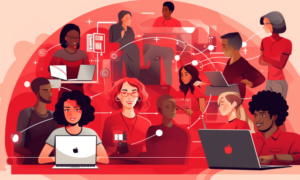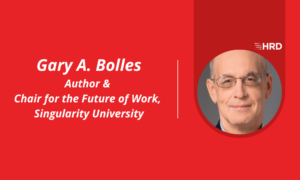Are educational workplaces the universities of the future?
- 5 Min Read
Dr Marie Puybaraud explains why learning based workplaces designed for educational activities will be a key feature of the future workplace. Working environments should be places where the healthy collisions of minds and people contributes to individual growth.
- Author: Dr Marie Puybaraud
- Date published: Sep 10, 2018
- Categories

Until recently, corporate learning was, by and large, nothing more than a series of standardised mandatory training courses delivered in standardised training rooms themselves underutilised, unappealing and costly to set up and maintain.
We’ve all been there. And we’ve all switched off. Worse still, four hours later, we’re not even better equipped to resolve our work issues than we were before the training. This ‘ticking the box’ approach to learning might have worked in the past, but times have changed; business and employees demand more.
 What makes the perfect leaning environment? For me, it would be somewhere I can easily absorb knowledge – kind of like a giant, inspirational library, with easy access to only the best books – or a place where I can exchange and gain insight from a mentor or an expert, rather than a dispassionate, often virtual lecturer.
What makes the perfect leaning environment? For me, it would be somewhere I can easily absorb knowledge – kind of like a giant, inspirational library, with easy access to only the best books – or a place where I can exchange and gain insight from a mentor or an expert, rather than a dispassionate, often virtual lecturer.
It’s a question of creating an environment where you get ‘the spark’: that realisation that you are learning (and remembering) something genuinely useful that will help you develop professionally. These special moments are rare in traditional workplaces where the environment often stifles creativity and inspirational thinking.
For one thing, work is now faster and more complex. Powerful digital technologies are radically transforming the business landscape and the pace of change will only accelerate. To stay ahead of the competition from new, nimble and digitally-driven startups, enterprises need their people to think differently, to be highly engaged and possess an almost infectious enthusiasm for learning new things.
The degree of agility and originality needed certainly won’t come from rigid, conventional training methods and spaces. Companies must instead focus on building a workforce that has a passion for learning, for discovery and exploration in a stimulating environment. The goal should be to create a learning culture; when learning becomes a mindset, rather than something that happens at a certain time or place. It must be an on-going habit and a key part of how everyday work gets accomplished. This includes trailing new ideas and learning from failures.
Another big reason for fostering a learning culture is the need to enrich employee experience. JLL research on human experience in the workplace has found that 90% of employees seek more opportunities to learn, grow and share knowledge at work and that a learning environment is a crucial component to enhance employee experience – essential for attracting, retaining and growing tomorrow’s workforce.
The fact is, employees who lack the right skills or knowledge are far less likely to reach their full potential at work. What’s more, they certainly aren’t going to build the self-confidence and entrepreneurial drive necessary to show initiative or take on new challenges. At a time when innovation is so vital, it is crucial for enterprises to invest in advanced professional development programs that make knowledge even more accessible, as well as stimulating environments and areas for collaborative learning, prototyping, research, exploration and much more.
In the digital age, many companies will be tempted – especially for cost reasons – to shift all their learning to the cloud. We have already seen a surge in digital training solutions from games and e-coaching, to instructional videos and virtual simulations, which will become more sophisticated, intuitive and immersive. These alone will not deliver the innovation enterprises needed, nor the experience employees’ desire. Indeed, new research suggests that even tech au fait workers don’t want to engage solely with digital learning tools. The real-life, in-person and hands-on experiences will still hold tremendous value. To deliver these, companies need – you guessed it – space to entertain a learning experience
Over the coming years, more companies will combine digital approaches with physical spaces that nurture focussed learning and educational activities. Here are some examples of learning spaces and enterprises I’ve encountered or visited:
The Hague University (Den Haag School) or Stanford University
A perfect mixture of an educational environment where interaction between lecturers and students is happening in a corporate-like learning environment. A fantastic example of how learning can happen through collaboration.
The Commonwealth Bank Australia in Sydney
An office where there is significant emphasis on collaborative environments that boost engagement and team building. The place buzzes and is a perfect example of an engaging environment where learning is encouraged and supported all the way through experimentation.
Olympus: Customer Experience Centre, Australia
The Customer Experience Centre (CEC) at the Olympus HQ in Melbourne enables customers to experience products in action and to see the Olympus promise to develop the best solutions first hand. It includes state-of-the-art educational and demonstration facilities as well as fully equipped training rooms plus an operating theatre, simulation studios and R&D labs.
Googleplex: University Life at Work
The Google’s headquarters in Mountain View, California, which mimics a university campus, embodies a “Back to School” ethos. It includes a formal lecture and “tech talk” areas as well as whiteboards for impromptu collaboration and workshop space for those who like to tinker. By bringing the university vibe into the workplace, Google encourages an atmosphere of learning and experimentation.
The new Facebook HQ
Located in Menlo Park and designed by Gerry, the new Facebook Singapore head office has blown me away. The park feels like a village where encounters are carefully and subtly facilitated. You know you will learn in every corner of the workplace and make sure of peers’ knowledge.
DBS in Singapore
A great example of a radical transformation that drives team collaboration and innovation through interactions. This experimental working environment is a state-of-the-art pilot space, evolving a concept that will be extended across the rest of the business. It is a place to learn to work differently.









